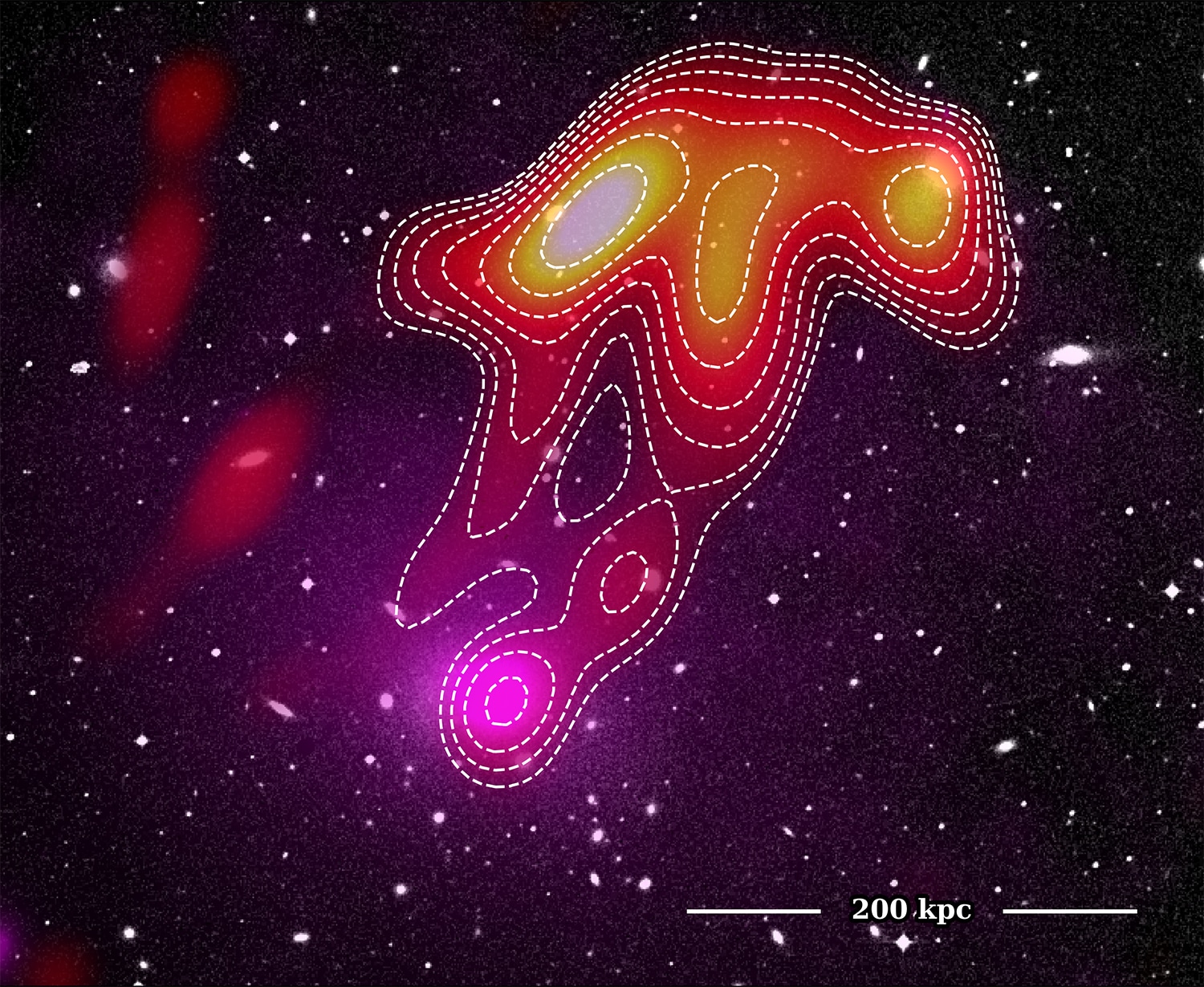
Using a Murchison Widefield Array (MWA) telescope, a team of Australian-Italian astronomers has observed a cosmic phenomenon that appears like a jellyfish. They studied the data, and as they turned down the frequency, we saw a ghostly jellyfish-like structure begin to emerge.
This new space jellyfish is bright at regular FM radio frequencies and disappears at 200 MHz emission. Until now, astronomers haven’t observed such rapidly disappearing extragalactic emissions.
Using the telescope, astronomers observed a cluster of galaxies known as Abell 2877. They observed the cluster for 12 hours at five radio frequencies between 87.5 and 215.5 megahertz.
Lead author and Ph.D. candidate Torrance Hodgson, from the Curtin University node of the International Centre for Radio Astronomy Research (ICRAR) in Perth, said, “We looked at the data, and as we turned down the frequency, we saw a ghostly jellyfish-like structure begin to emerge.”
“This uniquely steep spectrum has been challenging to explain. We’ve had to undertake some cosmic archaeology to understand the ancient background story of the jellyfish.”
“Our working theory is that around 2 billion years ago, a handful of supermassive black holes from multiple galaxies spewed out powerful jets of plasma. This plasma faded, went quiet, and lay dormant.”
“Then quite recently, two things happened—the plasma started mixing at the same time as very gentle shock waves passed through the system. This has briefly reignited the plasma, lighting up the jellyfish and its tentacles for us to see.”
“The jellyfish is over a third of the Moon’s diameter when observed from Earth but can only be seen with low-frequency radio telescopes. Most radio telescopes can’t achieve observations this low due to their design or location.”
Professor Johnston-Hollitt, Mr. Hodgson’s supervisor and co-author, said the SKA would give us an unparalleled view of the low-frequency Universe.
“The SKA will be thousands of times more sensitive and have much better resolution than the MWA, so there may be much other mysterious radio jellyfish waiting to be discovered once it’s operational.”
“We’re about to build an instrument to make a high resolution, fast frame-rate movie of the evolving radio Universe. It will show us from the first stars and galaxies through to the present day.”
“Discoveries like the jellyfish only hint at what’s to come. It’s an exciting time for anyone seeking answers to fundamental questions about the cosmos.”
Journal Reference:
- Torrance Hodgson et al. Ultra-Steep Spectrum Radio ‘Jellyfish’ Uncovered in Abell 2877. DOI: 10.3847/1538-4357/abe384
Continue reading Astronomers observed a space jellyfish on Tech Explorist.
0 comments:
Post a Comment